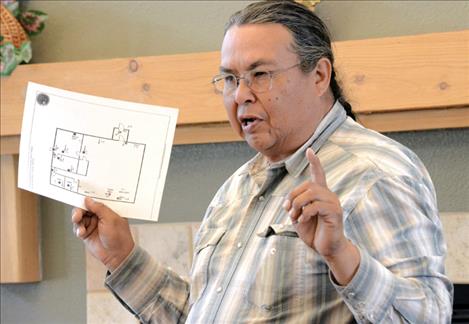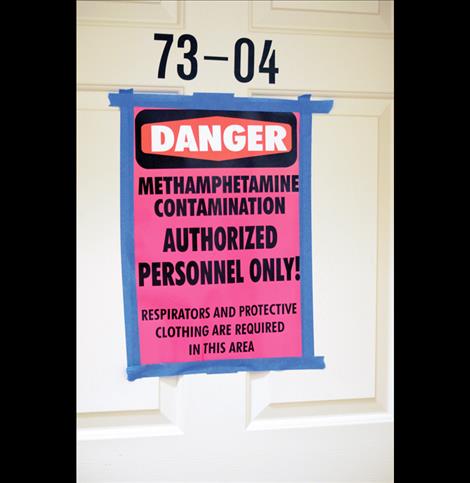Meth contamination affects elders
Hey savvy news reader! Thanks for choosing local.
You are now reading
1 of 3 free articles.
ARLEE – Methamphetamine contamination closed the Salish and Kootenai Tribal Senior Citizens Center a few weeks ago, and when the elders gathered on Thursday in a new temporary location for their weekly lunch to discuss the problem — the entire tribal council was on hand to hear concerns.
“Two days a week we gather to eat and socialize,” Diana Cote said of the activities in the center after the meeting. It was assumed that the meth wasn’t being smoked by the elders when she added: “People need to leave their meth at home so we can eat. We are calling this problem ‘methed-up.’”
Snuse McClure, 92, has been having meals at the center since 1977, and he said “Nothing like this has ever happened before.”
The tribal council decided to test the center and other buildings for meth residue after the Head Start facility tested positive earlier this year. After testing positive for residue, the Senior Center was closed. The elder’s weekly meals were moved to the dining area at the Louise Combs Center, which is the tribe’s independent living center, but two rooms tested positive for meth in that building, although the rooms were sealed off so the elders didn’t need to move again.
“If this keeps up we will be eating out at the powwow grounds soon,” Cote said.
Salish and Kootenai Housing Authority Executive Director Jason Adams and Facilities Maintenance Manager Willie Stevens attended the lunch to help explain the meth problem in the center. Adams started by saying the problem wasn’t localized.
“We have over 500 units on the reservation,” Adams said of tribal housing. “Fifty-four tested positive (for meth residue). A unit in Polson was detected as a meth lab, but the unit next to it tested negative,” he said explaining why the elders were still able to use the current dining hall with the sealed off rooms nearby.
“This stuff is everywhere,” he said. “It’s probably on the money in your wallet.”
Tribal Council Representative Patty Stevens clarified before the meeting that the council is working on adopting a policy about meth contamination found in tribal facilities. The draft policy states that the residue level determines the type of remediation required.
If a test reveals meth residue to be under 1.5 ug/100cm2, the building can be cleaned, but a building can be considered for demolition if the level is over 20.0 ug/100cm2. The tribe’s levels are higher than Montana standards.
“The state of California has been dealing with this issue longer,” Adams said. “We decided to change to the California standard a month ago.”
In some areas, the senior center tested over 1.5. Willie Stevens said those materials can be removed. The rest of the center can be cleaned. It’s estimated that it will cost around $65,000 to clean the center, which could take six months.
Many elders asked the council to consider if the building was monetarily worth the cost of cleaning. Stevens said the maintenance department doesn’t have the amount of money needed to clean the center. He said the tribal council needs to consider a source of funding for the project.
The elders asked why there seems to be an explosion of meth on the reservation, and many speculated, but a concrete answer wasn’t determined. Many elders were concerned about the health consequences of meth for users, and others wanted some accountability for the high cost of cleanup.

















